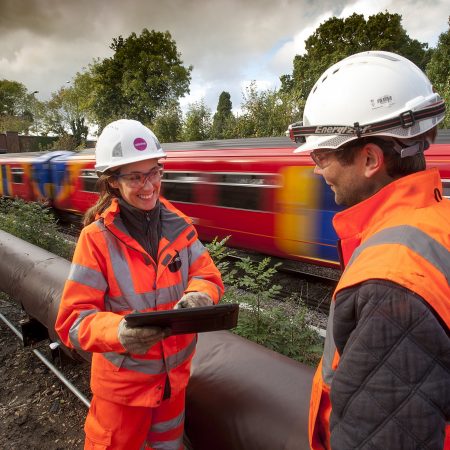Digital Transformation is About People as Much as Technology
‘Modernise or die’ was the challenge thrown out by the Farmer Review Report. Only through modernising how we work can we improve our productivity, margins and chances of survival. And to a large extent, the construction sector has shown a willingness to take on the challenge.
And like it or not, the technology wave is already breaking over our industry. It can’t be ignored. The choice is whether to swim with the tide or battle against it.
The sector still has a long distance to travel because digital transformation in any business is difficult. In traditional ones like construction it’s probably harder still. The barriers most people see are process implementation, skills and cost, but this tends to overlook the most significant factor of all: people.
A Shared Journey
Change is hard (if not impossible) to impose. There is always a strong pull back to the old ways unless people feel part of the change process and are committed to its success. When people are ready for change and enthusiastic about the benefits, you have a chance to move forward.
Leadership is naturally important. A group of business leaders agreeing on the need for change and signing-off the necessary budgets never achieved anything. Organisations change when people understand the need for change, see the potential benefits, and see leaders committed to making it happen. Everyone needs to have a stake in its success.
Implementation Structure
Digital transformation isn’t a project (although there are projects within it), and it isn’t a process, it’s a journey to new ways of working that will continue to evolve. The implementation structure needs to reflect this. Business leaders throwing their support behind the transformation need active managers and supervisors who are able to explain and reinforce the benefits to employees and supply chain partners.
Early adopters and technology champions have a vital role to play in showing the benefits of digitally enabled working to their colleagues. They help to prepare the ground for widespread adoption of new tools and methods by demonstrating that they work and will deliver benefits to the people who will use them.
The process is one of cultural as well as technological change. Most of the people who work in the sector won’t have read the Farmer Report. Some may even see technology as a threat rather than an opportunity, or maybe as something that will affect the next generation of employees. By changing that outlook, we can ensure that the rest of the transformation can follow.

